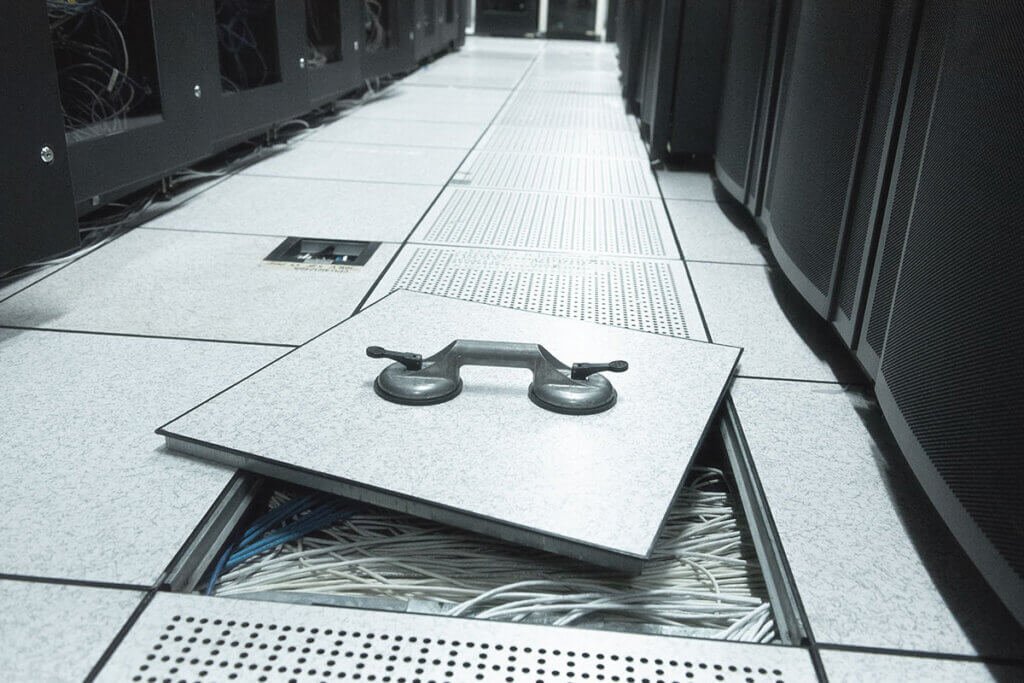Raised flooring is a critical component for modern server room design, providing functionality and efficiency essential for maintaining the infrastructure of IT environments. This article explores why raised flooring is a must-have in server rooms, detailing its benefits for airflow, cable management, and operational flexibility.
1. Enhanced Airflow Management
Server rooms require precise temperature control to ensure optimal performance and prevent overheating. Raised floors create a dedicated space underneath the servers for efficient air circulation.
- Cold and Hot Aisle Containment:
Raised floors facilitate the separation of cold intake air and hot exhaust air, improving the efficiency of cooling systems. - Integration with HVAC Systems:
By channeling cool air through perforated tiles, raised flooring ensures even distribution across server racks.
2. Efficient Cable Management
Raised flooring provides an organized and hidden pathway for cables, which is crucial in server rooms with complex wiring systems.
- Reduced Clutter:
Cables are neatly arranged under the floor, avoiding tangles and improving workspace safety. - Easy Accessibility:
Technicians can quickly access cables for maintenance or upgrades without disrupting server operations.
3. Improved Safety and Risk Reduction
By housing cables, power lines, and other infrastructure beneath the floor, raised flooring reduces risks such as:
- Tripping Hazards:
Removing exposed cables enhances safety for personnel. - Fire Risks:
Keeping power lines separated and contained lowers the chance of electrical fires.
4. Flexibility for Infrastructure Upgrades
Server room requirements often evolve with technological advancements. Raised flooring provides the flexibility to adapt to these changes.
- Scalability:
New cables or cooling systems can be added without major structural alterations. - Modularity:
Individual tiles can be removed or replaced, allowing targeted adjustments without impacting the entire room.
5. Aesthetic and Professional Appearance
Raised floors contribute to a clean and professional look by concealing cables and equipment, creating an uncluttered environment that reflects well on the organization.
6. Cost Efficiency
Although the initial installation cost of raised flooring may seem significant, its long-term benefits make it cost-effective:
- Energy Savings:
Optimized airflow reduces energy consumption for cooling systems. - Reduced Downtime:
Easy maintenance and upgrades minimize server room disruptions.
7. Static Electricity Control
Static electricity can damage sensitive server components. Raised floors, particularly those with anti-static surfaces, help to dissipate static charges and protect hardware.
Using raised flooring in a server room is a practical and strategic decision that enhances functionality, safety, and efficiency. By improving airflow, managing cables, and offering flexibility, it ensures server rooms remain adaptable to the ever-changing needs of IT infrastructure. For more information about raised flooring options, visit Tiyam Floor.
